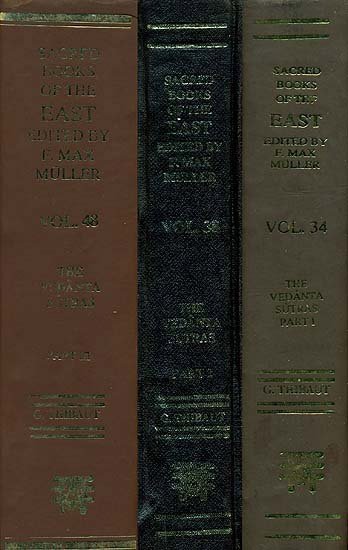Brahma Sutras (Ramanuja)
by George Thibaut | 1904 | 275,953 words | ISBN-10: 8120801350 | ISBN-13: 9788120801356
The English translation of the Brahma Sutras (also, Vedanta Sutras) with commentary by Ramanuja (known as the Sri Bhasya). The Brahmasutra expounds the essential philosophy of the Upanishads which, primarily revolving around the knowledge of Brahman and Atman, represents the foundation of Vedanta. Ramanjua’s interpretation of these sutras from a V...
Sutra 1.1.7
The next following Sūtra confirms the same view.
7. Because release is taught of him who takes his stand on it.
Śvetaketu, who is desirous of final release, is at first—by means of the clause 'Thou art that'—instructed to meditate on himself as having his Self in that which truly is; and thereupon the passage 'for him there is delay' only as long as 'I shall not be released, then I shall be united' teaches that for a man taking his stand upon that teaching there will be Release, i.e. union with Brahman—which is delayed only until this mortal body falls away. If, on the other hand, the text would teach that the non-intelligent Pradhāna is the general cause, it could not possibly teach that meditation on this Pradhāna being a man’s Self is the means towards his Release. A man taking his stand on such meditation rather would on death be united with a non-sentient principle, according to the scriptural saying, 'According as his thought is in this world, so will he be when he has departed this life' (Ch. Up. III, 14, 1). And Scripture, which is more loving than even a thousand parents, cannot possibly teach such union with the Non-sentient, which is acknowledged to be the cause of all the assaults of suffering in its threefold form. Moreover, those who hold the theory of the Pradhāna being the cause of the world do not themselves maintain that he who takes his stand upon the Pradhāna attains final release.
